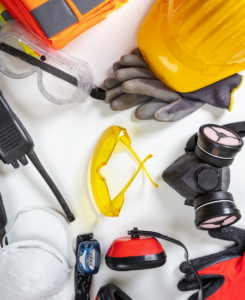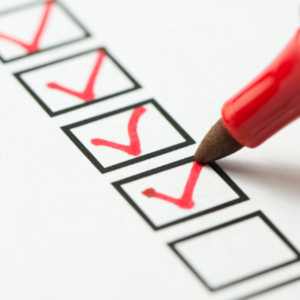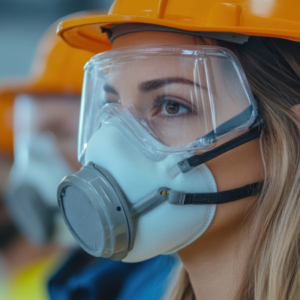PPE Do’s and Don’ts
June is National Safety Month, making it the perfect time to revisit one of the most fundamental and too often overlooked elements of workplace safety: Personal Protective Equipment (PPE). While PPE is often considered the last line of defense against hazards, how it’s selected, worn, and maintained can make the difference between effective protection and a serious safety incident.
✅ PPE Do’s 
1. Do Choose the Right PPE for the Job
Not all PPE is created equal. Use a proper hazard assessment to determine what protection is required. This could include respiratory, hearing, eye, hand, or full-body protection. ANSI, NIOSH, and OSHA standards exist for a reason, so use them to guide your selection.
2. Do Inspect PPE Before Use
Cracks in face shields, fraying straps on harnesses, or worn-out gloves can compromise protection. Make visual and functional checks part of your daily routine. We offer Level A Suit Testing through our sister company iFacility Services.
3. Do Ensure Proper Fit
Ill-fitting PPE can cause discomfort or even create new hazards. Respirators must be fit-tested. Gloves should allow dexterity. Earplugs should fully seal the ear canal without pain. Fit matters.
4. Do Keep PPE Clean and Stored Correctly
Dirty or contaminated PPE is ineffective and may pose health risks. Clean equipment as instructed by the manufacturer, and store it in a dry, designated space away from damage or contamination.
5. Do Train and Retrain Employees
Initial training is great, but ongoing education ensures employees stay up to date with the latest procedures and technologies. Demonstrations, toolbox talks, and signage can reinforce usage.
❌ PPE Don’ts
1. Don’t Rely on PPE Alone
PPE is only one part of the hierarchy of controls. Always consider ways to eliminate or reduce hazards through engineering or administrative means first.
2. Don’t Modify or Misuse Equipment
Never cut straps, tape over vents, or wear PPE in ways that it wasn’t designed to be used. Shortcuts can create dangerous vulnerabilities.
3. Don’t Share PPE Unless It’s Meant To Be Shared
Many types of PPE, such as earplugs, gloves, and respirators, are personal for a reason. Sharing without proper sanitization or fit adjustments can spread contamination or reduce effectiveness.
4. Don’t Ignore the Expiration Dates
Yes, PPE can expire. Filters, cartridges, and even safety harnesses have a lifespan. Using them beyond this window can lead to failure in critical moments.
5. Don’t Assume “One Size Fits All” Works
Gender, body type, and personal needs mean that “universal fit” is often anything but. Ensure that all workers have access to properly fitting PPE that supports their job duties and comfort.
PPE Is Everyone’s Responsibility
During National Safety Month, it’s a good reminder that safety isn’t just a policy. It’s a culture. Wearing PPE is one thing. Wearing it correctly and consistently, maintaining it properly, and choosing it wisely is another. From leadership to new hires, everyone plays a role in reinforcing safe practices and speaking up when something seems off.
Let’s use this month as a chance to recommit to the basics and make PPE compliance second nature. Because when it comes to worker safety, the right gear used the right way can save lives.
PPE Do’s and Don’ts …. Do Use a Checklist!
✅ PPE Inspection & Compliance Checklist
Use this checklist during daily toolbox talks, before starting a shift, or as part of monthly safety audits.
General PPE Checks (All Types)
-
PPE is clean and free from damage
-
No signs of wear, cracks, or corrosion
-
PPE is the correct type for the task at hand
-
PPE fits properly (not too loose or tight)
-
Expiration dates or service life have not been exceeded
-
PPE has been stored correctly between uses
-
Proper donning/doffing procedure is followed
-
No unauthorized modifications have been made
Specific PPE Items
Eye and Face Protection
-
Lenses are free of cracks and scratches
-
Straps and frames are intact and secure
-
Goggles seal properly against the face
-
Face shields are used with goggles if required
Hearing Protection
-
Earplugs or earmuffs are clean and undamaged
-
Proper insertion technique is used for earplugs
-
Fit test or noise reduction rating is verified as appropriate
Respiratory Protection
-
Respirators are clean and properly stored
- We offer Respirator Fit Testing & Maintenance through our sister company iFacility Services

- We offer Respirator Fit Testing & Maintenance through our sister company iFacility Services
-
Cartridges/filters are within service life
-
Users have up-to-date fit testing (annually)
-
No facial hair interfering with seal (if applicable)
Hand Protection
-
Gloves are appropriate for the chemicals, heat, or mechanical hazards
-
No holes, tears, or punctures
-
Gloves are not reused if disposable
Foot Protection
-
Safety boots or shoes are in good condition
-
Toe caps and soles are intact
-
Slip-resistant and appropriate for the environment
Fall Protection (if applicable)
-
Harnesses and lanyards are free of fraying, cuts, or damage
-
Hardware (hooks, buckles) functions properly
-
Anchor points are secure and rated for the load
-
Inspection tags and dates are up-to-date.
- We offer Fall Protection Inspection Service through our sister company iFacility Services




